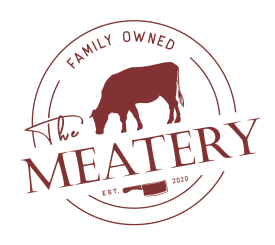Comparison of Japanese and Australian Wagyu Origins
Wagyu beef is renowned globally for its exceptional quality, tenderness, and intricate marbling. While Japanese Wagyu is the original and most prestigious, Australian Wagyu has been steadily gaining popularity, offering consumers a distinctive yet comparable alternative. To fully grasp the nuanced differences between these two varieties of Wagyu, it is crucial to explore their origins in depth.
Japanese Wagyu boasts a rich history dating back several centuries. Developed meticulously through selective breeding practices, Japanese cattle breeders aimed specifically at enhancing marbling and creating unique flavor profiles. Among the four primary Japanese Wagyu breeds—Black, Brown, Polled, and Shorthorn—the Black breed, known as "Kuroge," stands out as the most highly prized and expensive, renowned worldwide for its unmatched marbling quality and succulent tenderness.
Conversely, Australian Wagyu represents a more recent chapter in the story of premium beef. The first Wagyu cattle were imported from Japan to Australia in the early 1990s, marking the beginning of a flourishing industry. Australian farmers quickly recognized Wagyu's exceptional potential, initiating comprehensive breeding programs aimed at establishing thriving domestic Wagyu herds. Although rooted in Japanese genetics, the unique Australian climate, distinct feed regimens, and innovative breeding techniques have shaped Australian Wagyu into a unique product distinct from its original Japanese counterpart.
Differences in Breeding and Genetics
Genetics and breeding techniques significantly influence the characteristics of Japanese and Australian Wagyu. In Japan, the breeding of Wagyu cattle adheres to strict governmental guidelines designed to protect breed purity, heritage, and quality. Japanese Wagyu cattle are raised in carefully monitored environments, fed specialized diets that often include grains, rice straw, and sometimes even beer and sake by-products, enhancing marbling and flavor complexity.
Australian Wagyu breeders, on the other hand, operate with more flexibility. Cross-breeding with local cattle breeds, such as Angus, is common practice. This cross-breeding not only enhances cattle adaptability to Australia's varied climates but also yields cattle with larger frames and slightly different marbling characteristics. Although cross-breeding introduces greater genetic diversity, Australian Wagyu still maintains impressive marbling, tenderness, and flavor, albeit subtly different from purebred Japanese Wagyu.
Moreover, Australian Wagyu cattle typically benefit from expansive, open-range farming practices, allowing animals greater freedom and reducing stress compared to the relatively confined conditions typical of Japanese Wagyu cattle farming. This lower stress environment can positively influence meat quality, tenderness, and flavor profiles, presenting consumers with unique attributes distinct from Japanese Wagyu.
Price and Availability Comparison
Due to Japan’s strict breeding standards and limited production scale, authentic Japanese Wagyu generally commands significantly higher prices and is less widely available internationally. The limited supply, combined with immense global demand and rigorous quality standards, results in premium pricing. Top-grade Japanese Wagyu cuts regularly fetch extravagant prices in exclusive restaurants and specialty gourmet markets.
On the flip side, Australian Wagyu is notably more accessible and affordable. The broader production scale, greater genetic flexibility, and fewer regulatory restrictions contribute to a wider availability of quality Wagyu beef at more approachable price points. Although still considered premium, Australian Wagyu offers consumers an excellent opportunity to experience superior marbling and tenderness without incurring the substantial expense typically associated with Japanese Wagyu.
It’s essential to recognize that both Japanese and Australian Wagyu undergo stringent grading processes. Marbling intensity greatly influences pricing; however, even lower-grade Australian Wagyu often delivers outstanding culinary experiences, positioning itself as an excellent value proposition for discerning beef connoisseurs.
Cooking Techniques for Each Type
Both Australian and Japanese Wagyu require thoughtful cooking techniques due to their high marbling and delicate nature. Proper cooking methods ensure maximum flavor extraction and tenderness preservation. Japanese Wagyu, with its exceptionally high fat content, benefits significantly from high-heat cooking techniques such as grilling on robata or teppanyaki grills, or brief pan-searing. These techniques quickly render the abundant intramuscular fat, yielding a buttery, tender texture and an intense flavor profile.
Australian Wagyu is more versatile, handling a broader range of culinary approaches effectively. Beyond high-heat methods like grilling or pan-searing, Australian Wagyu lends itself well to roasting, braising, or even slow-cooking techniques. These methods allow its robust marbling to melt gradually, infusing the meat deeply with flavor and moisture. Additionally, the slightly firmer texture of Australian Wagyu makes it particularly suitable for grilling and pan-searing, retaining juiciness and flavor exceptionally well.
Regardless of origin, it’s crucial to avoid overcooking Wagyu beef, as excessive heat can quickly diminish its prized tenderness and render it disappointingly dry. Proper temperature control, attentive cooking practices, and adequate resting periods post-cooking are vital to delivering an exceptional dining experience with both Wagyu varieties.
How Does Australian Wagyu Taste?
Australian Wagyu possesses a distinct and enticing flavor profile, differentiating it clearly from its Japanese counterpart. While still offering the characteristic buttery richness associated with high-quality Wagyu, Australian Wagyu typically presents a noticeably more robust, beef-forward taste. This heightened beefiness stems from Australia's distinctive environmental conditions, diverse feed types (often grass or grain-fed), and cross-breeding practices.
The marbling found in Australian Wagyu generally appears slightly coarser compared to the ultra-refined marbling of Japanese Wagyu. This coarser marbling contributes to a pronounced beefy flavor, enhancing the overall savory complexity of the meat without sacrificing the hallmark tenderness and luxurious mouthfeel that Wagyu aficionados expect.
Additionally, Australian Wagyu may express deeper umami notes resulting from diverse grazing practices and diets specific to Australian ranches. This added umami dimension enriches the beef's flavor profile, rendering it especially appealing to those seeking a slightly heartier Wagyu experience.
Flavor Profile and Texture Comparison
When directly comparing Japanese and Australian Wagyu, several key differences emerge prominently in both flavor and texture. Japanese Wagyu is celebrated globally for its delicate, buttery richness, accompanied by subtly sweet undertones. Its extraordinary marbling produces an exceptionally soft, melt-in-your-mouth sensation, widely regarded as the pinnacle of beef tenderness.
Australian Wagyu, however, introduces a compelling alternative marked by bold, robust, beef-centric flavors. Its more pronounced marbling lends itself to a slightly firmer yet remarkably tender texture, appealing particularly to those who favor a more traditional steak experience without compromising the premium Wagyu quality.
Ultimately, the choice between Japanese and Australian Wagyu is highly subjective, dependent upon individual tastes and culinary preferences. Some palates will gravitate naturally towards the refined elegance and unmatched buttery smoothness of Japanese Wagyu, whereas others may prefer the assertive, beef-forward flavors and robust character of Australian Wagyu.
Final Thoughts
Both Japanese and Australian Wagyu represent the pinnacle of beef quality, each offering unique characteristics that cater to different tastes and preferences. Understanding their nuanced differences in origins, genetics, taste profiles, and cooking techniques allows consumers to make informed decisions and fully appreciate the culinary artistry each variety brings to the table.
Whether your palate leans toward the delicate sophistication of Japanese Wagyu or the hearty robustness of Australian Wagyu, indulging in either promises an unforgettable gastronomic experience that exemplifies why Wagyu beef remains globally revered.









